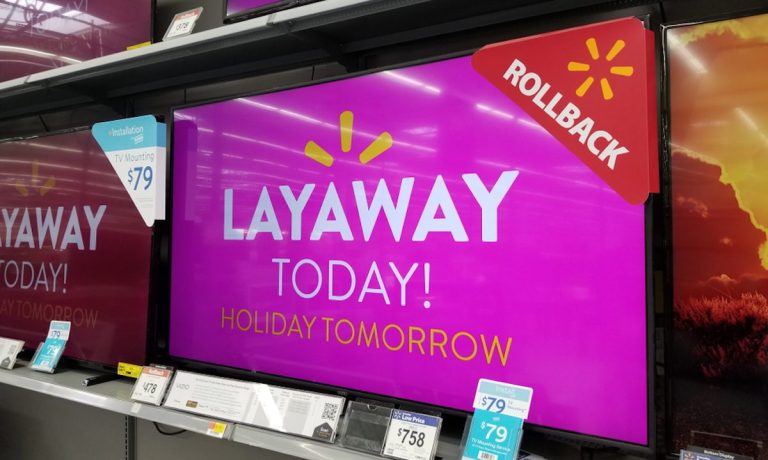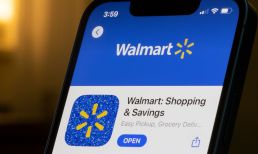Walmart is getting rid of its typical layaway option ahead of the holiday shopping season, instead pointing consumers to its buy now, pay later (BNPL) option through Affirm, a vote of confidence for the increasingly popular payment solution.
The box store king entered a partnership with Affirm in 2019, giving shoppers the option to use Affirm to pay for both in-person and online purchases over time. Walmart had scaled back its seasonal layaway option at most stores, except for select jewelry options at some stores, a company spokesperson told PYMNTS, and “based on what we learned, we are confident that our payment options provide the right solutions for our customers.”
The news comes just weeks after Amazon said it was partnering with Affirm to offer BNPL on purchases of $50 or more, putting two retail heavyweights into the financial company’s pocket and opening the eCommerce giant’s doors to those for whom traditional credit options are out of reach.
Related news: With Walmart and Amazon Now on Board With Affirm, BNPL Gains Critical Mass to Take on Big Credit
PYMNTS data shows that 29 million U.S. consumers have paid for purchases with BNPL at least once in the last 12 months, with over one-quarter saying they could not have afforded to make the purchase without it. Additionally, nearly two-thirds of consumers view BNPL as a way to shop without overspending, a signal that the payment method may be increasingly important as holiday shopping ramps up.
Extending a Hand to SMBs
Advertisement: Scroll to Continue
In the latest sign of Amazon’s increasing interest in working with small and medium-sized businesses (SMBs), the eCommerce giant has partnered with Lendistry on a pilot program focused on providing short-term loans to third-party sellers.
Everett Sands, founder and CEO of Lendistry, said in a statement that Amazon approached his community development financial institution with this idea, and he saw it as “a great fit.”
“The Amazon seller community is the perfect place to make these kinds of financing programs available that can truly make a difference for a lot of businesses,” Sands said.
Earlier this month, reports surfaced that Amazon is developing a point-of-sale (POS) solution for third-party retailers intended to compete with Shopify, PayPal and others. The eCommerce company also has its own Amazon Lending program that allows online sellers to borrow working capital, available by invitation only.
Walmart has also been expanding its ecosystem for other merchants, first through a collaboration with Adobe to license the digital technology that powers Walmart’s Marketplace, eCommerce, and in-store fulfillment and pickup technologies — and subsequently through the launch of GoLocal, a white-label, last-mile delivery service.
The moves signal the growing importance of each company’s third-party marketplace and the retail behemoths’ quest to find other ways to connect with sellers, as an increasing number of them look to diversify their channels. Chris Bell, CEO of Perch, told PYMNTS in a recent interview that a part of the company’s strategy with brands it acquires is moving products onto other eCommerce platforms.
See: Perch Looks to Build the Consumer Products Company of the Future, One Amazon Seller at a Time
“We’re getting into things that are just structurally difficult for an entrepreneur to do — selling on Walmart’s marketplace, Target’s marketplace, going broad with those eCommerce marketplaces,” Bell said.
Together at Last
Walmart is integrating the grocery shopping experience with its overall eCommerce journey, allowing customers to utilize multiple fulfillment methods in the same order.
Rather than having to place their same-day grocery order, check out and then repeat the process for retail orders, the redesigned Walmart.com allows shoppers to browse items for pickup, delivery and fast shipping, and then add items for multiple reception methods to the same cart and check out all at once. Walmart also added a “buy now” button, an order tracking feature and a “quick add” recommended items feature.
Read more: Walmart Links Grocery Ordering to Cross-Category eCommerce Experience
Walmart still has a nearly 10-to-1 lead over Amazon when it comes to grocery, with food and beverage making up over 56% of its overall sales — but the friction between placing separate orders for same-day groceries and retail items may have caused fewer consumers to see Walmart as a place to do much of their shopping while trapped inside during the pandemic. Still, the lack of friction didn’t seem to do Amazon any good over the last 18 months — the company remains below a 2% share of the food and beverage category as of the second quarter.
Adding to Alexa
General Motors and Amazon this week introduced a new OnStar Guardian skill for Amazon smart devices, allowing users to connect with emergency-certified OnStar Advisors through Alexa-enabled technology. The new skill is initially available only to select OnStar members, with plans to roll out the service across the U.S. with compatible devices on a wider scale next year.
Read more: GM, Amazon Roll out OnStar Guardian Skill for Amazon Alexa
The new skill, or voice-activated app, only adds to the power Amazon has been expanding since first introducing Alexa to consumers in 2014. As Karen Webster pointed out earlier this week, Alexa is becoming an operating system that powers the connected economy, allowing consumers to connect with information and brands with their voice through a consistent experience. Alexa powers nearly every type of connected device and has 80,000 skills available in the U.S.
PYMNTS research finds that 31% of U.S. consumers have a voice-activated speaker in their homes, in addition to other voice AI-connected devices, with Alexa holding 68% of the voice AI market. One-quarter of consumers say they have used their voice-activated devices to make a purchase, while 19% haven’t, but say they might.
Readers also liked: Voice Operating Systems Like Alexa Will Power the Connected Economy: Here’s Why




